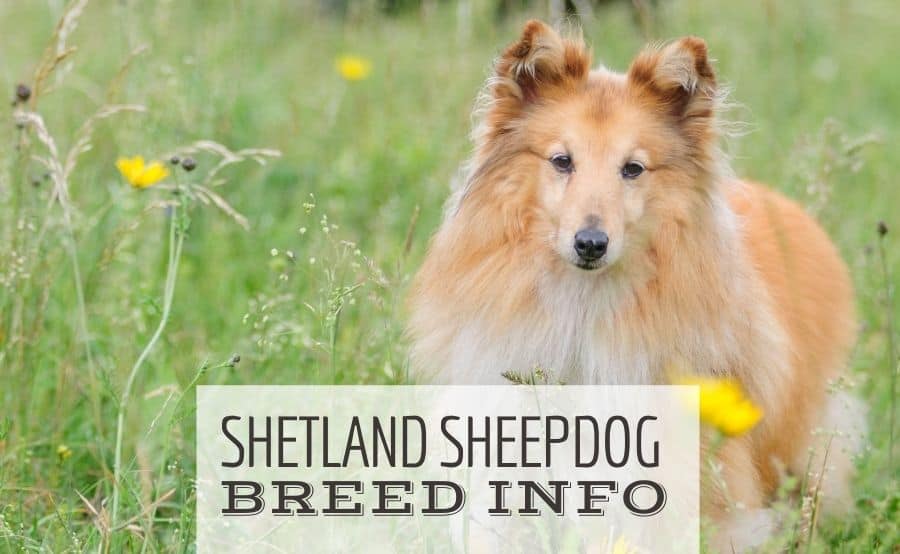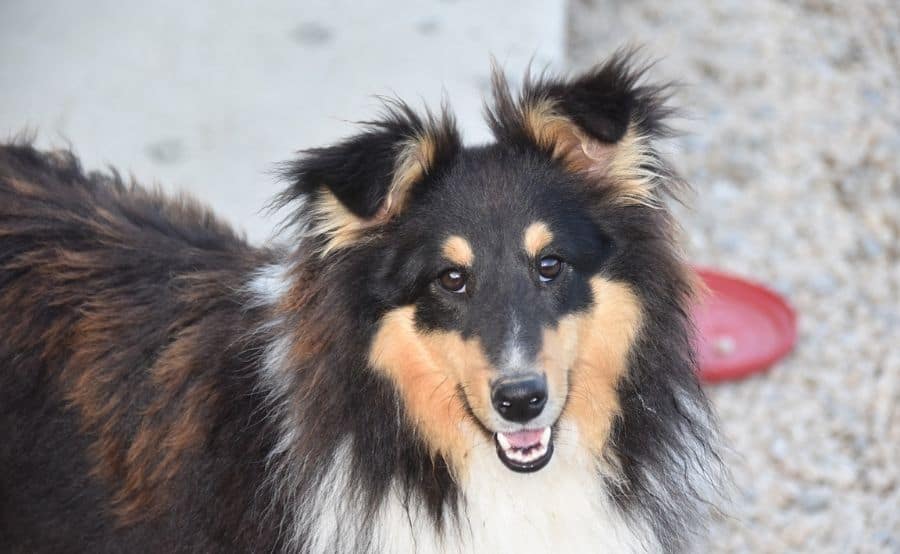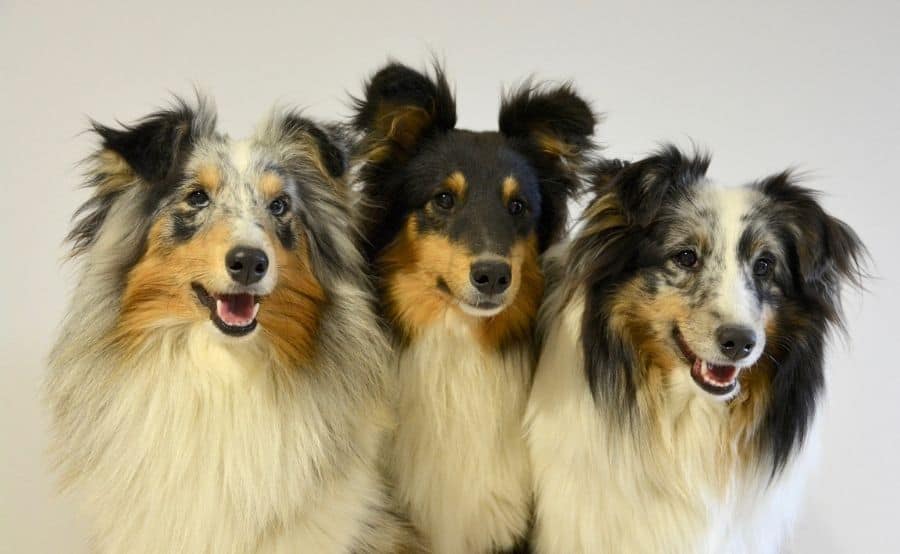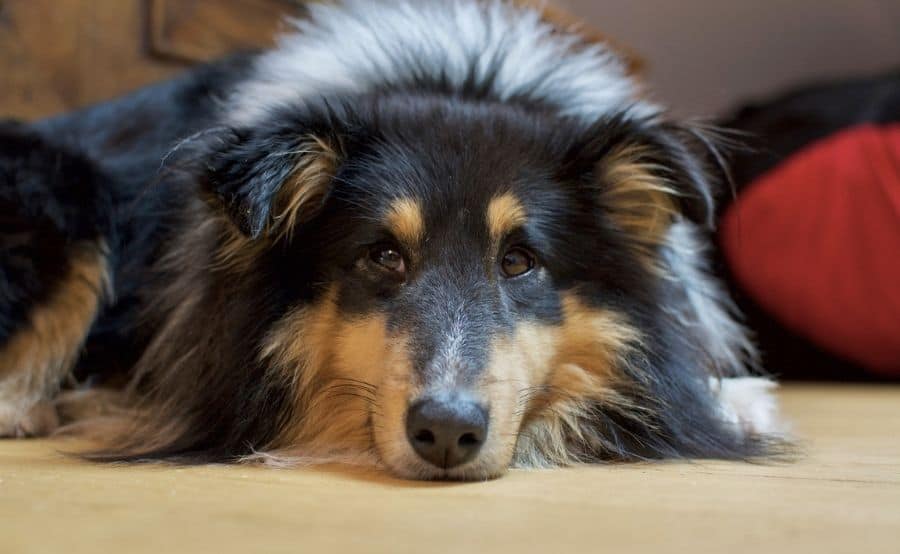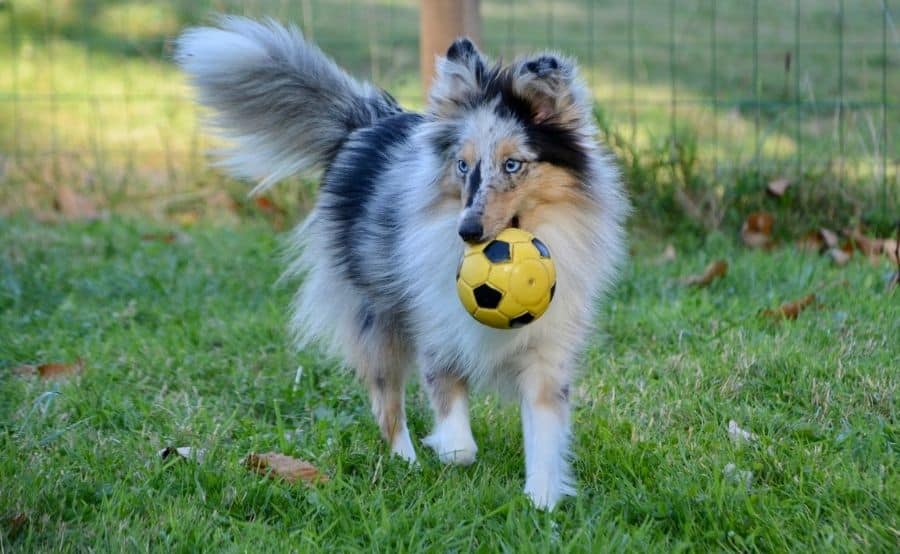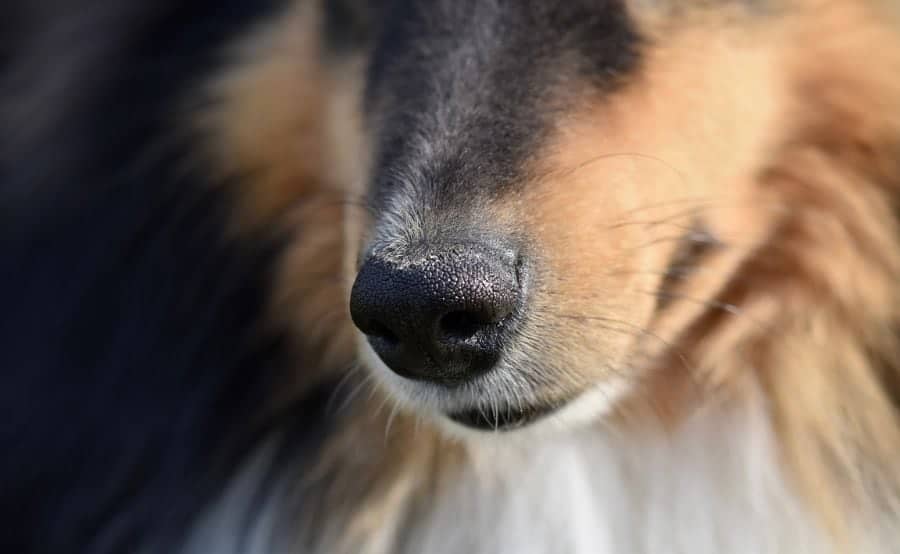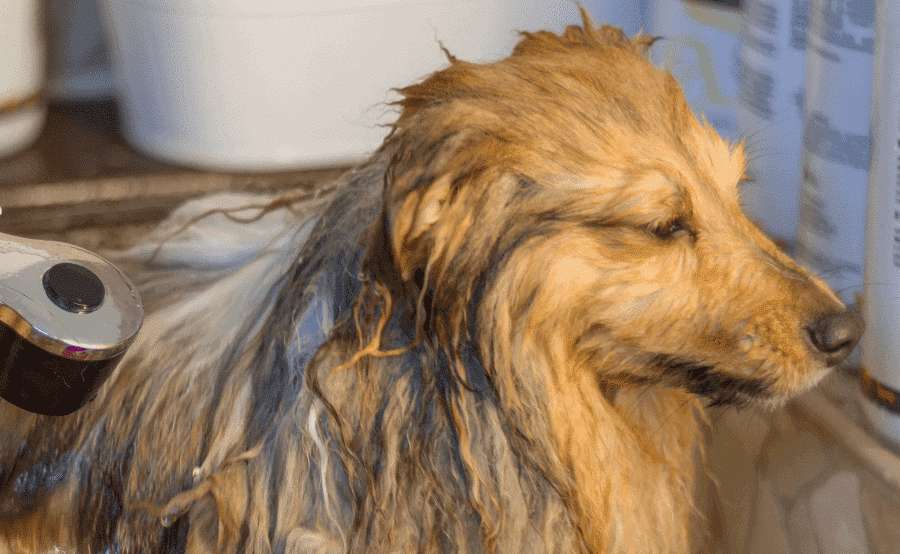An Active & Intelligent Herder – CanineJournal.com
Let’s dive in to find everything a prospective Shetland Sheepdog owners need to know about “shelties,” including where they originate, how they look, appearance, and more. Are you thinking about getting a Shetland Sheepdog? This guide has all you need to know about the breed.
Shetland Sheepdogs, affectionately known as “Shelties,” enjoy widespread popularity in many different parts of the world. They look like their cousins, the Collies, though this breed is a good bit smaller. Shelties are intelligent, obedient, and playful. Many adore them for their loyalty, affection, and spunky personalities.
The Sheltie is a diligent worker, initially bred for farm work. They often kept hungry birds and sheep out of vegetable gardens. They also worked as shepherd dogs, as you can probably work out by the name. Thanks to their great athleticism, many Shetland Sheepdogs excel at sports and agility trials. They may have a natural talent for working outdoors, but many pet owners from all over keep them as beloved family companions.
Where Did Shelties Originate?
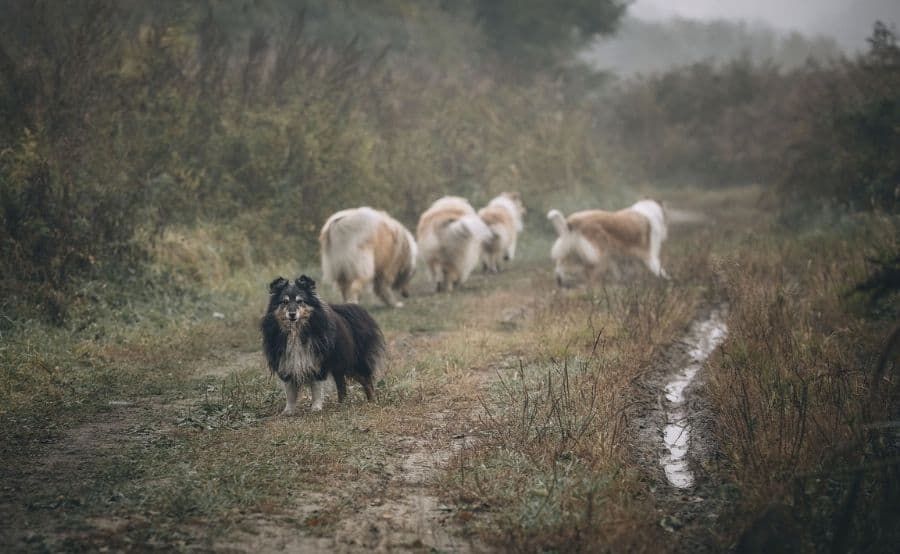
The Shelties originated in the Scottish Shetland Islands, at the northernmost point of the United Kingdom. But, looking at the modern-day Sheltie, it’s easy to be reminded of larger Collies, particularly the Rough Collie. Therefore, it’s not surprising to learn that Shetland Sheepdogs were originally called Shetland Collies.
Badenoch Rose was the name of the first Shetland Sheepdog registered with the English Kennel Club (now known as the United Kennel Club or UKC) in 1909 as Collie. However, this angered the Rough Collie breeders, who demanded that “Sheltie” be removed from the Collie line. This dispute was resolved in 1914, when the UKC recognized the breed as the Shetland Sheepdog.
The American Kennel Club (AKC) recognized the first Shetland Sheepdog in 1911, listing them as the 67th breed, when they registered the Sheltie known as Lord Scott.

It’s challenging to place the Sheltie’s history simply because the Shetland Islands are so remote. There is much debate about the actual breeds used in the Shetland Sheepdog’s development. Due to great Scandinavian influence in the area, Shelties may come from mixing the original Norse dogs brought there by their owners. Some of these dogs are thought to be Scandinavian herding dogs, probably Spitzes. From there, they are said to have been crossbred with mainland Collies. This might be where the Sheltie gets its resemblance to the Rough Collie; it’s often erroneously thought that Shelties are just Rough Collies selectively bred to be smaller.
However, it’s worth noting that the Sheltie’s small size has much to do with the isolated nature of the archipelago. As the Shetland Islands are 130 miles north of the Scottish mainland, it was difficult to obtain supplies from more populated areas. In addition, food on the islands was often scarce due to the rough terrain. Because of this, Shelties were bred as a small dog that wouldn’t eat as much food. They weren’t made too tiny to ensure they can still herd farm animals like cattle, sheep, and ponies.
Still, breeding the Sheltie to be smaller and smaller proved to be a good source of income for farmers who would sell the tiny, fluffy dogs to tourists. By the end of the 19th Century, the frequent cross-breeding for smaller size makes it difficult to remember the appearance of the original Sheltie. Panicked, people discussed the best way to return the breed to its initial state, though they had conflicting ideas. This led to the Sheltie looking quite different, depending on who bred them.
Eventually, their continued export allowed for greater popularity in mainland Britain, albeit in different shapes and sizes. Shelties would go on to compete in dog shows regardless of their differing appearances. In 1908, James Loggie added small Rough Collies into the mix to help further standardize the breed. This paved the way for the Shetland Sheepdog as we know them today.
During the 20th Century, the Shetland Sheepdog exploded in popularity. Today, they continue to enjoy great global fame. Many still work as farmhands, though most are loyal family companions. According to AKC’s 2019 ranking, the Sheltie is the 25th most popular dog in America.
What Is The Sheltie’s Temperament?
Keeping Sheltie’s working history in mind, it’s easy to see them as competent and diligent. This is common throughout the breed, though other traits are harder to pinpoint. While they are generally friendly, many Shelties are wary or aloof around strangers. The AKC says as much in their breed standard for the Shetland Sheepdog: “he may be reserved toward strangers but not to the point of showing fear or cringing in the ring.” It’s also difficult to find a Shetland Sheepdog who isn’t confident in themselves; shyness is among the faults listed in the AKC breed standard.
Shelties are known for their deep loyalty; your Shetland Sheepdog must show this trait. Towards their family, they are typically very affectionate and receptive, provided they’ve been properly socialized. While they easily get along with other members of their household, including children and pets, a Sheltie’s playfulness can sometimes get the better of them. True enough, Shelties are very easily excitable; their herding instincts can cause real trouble. It’s not uncommon to hear stories of Shelties chasing after cars or even airplanes.
Shetland Sheepdogs are highly intelligent and obedient. Their high obedience intelligence allows them to learn commands very quickly. For this reason, they are among some of the most agreeable dogs. Their eagerness to please allows them to be a fantastic family companion. Shelties have no shortage of love to give and are happiest when they can express that love. Separation anxiety can be a problem for Shelties that haven’t been taught to accept their humans leaving home as part of their routine. Shetland Sheepdogs handle alone time just fine when trained well, though they’ll always be eager for attention as soon as you’re home.
Your Sheltie may retain a lot of their herding behaviors even if they’re family dogs. For instance, they may attempt to herd people within the home by circling them. Unfortunately, this often means that they also nip, which could hurt you and other members of your family– especially kids. This is easily trained out of them if done early. We go over how to teach your Sheltie to behave in a later section.
What Do Shelties Look Like?
Shetland Sheepdogs look a lot like miniature Rough Collies. There are specifics that go into this appearance, though. They must be symmetrical everywhere so that none of the parts of their body look out of proportion. The AKC states that Shelties’ heads must be “a long, blunt wedge tapering slightly from ears to nose” when viewed from the top of the side. Shetland Sheepdogs should have small ears, high on their heads, primarily upright but with a little droop at the tip.
Their eyes must be dark, though blue or merle eyes are allowed in blue merle Shelties. The AKC only accepts black noses as part of the Sheltie breed standard. Shetland Sheepdogs should have a bright, gentle, inquisitive expression– a gorgeous face that reveals their fabulous personality.
Shelties are graceful, poised dogs; their elegant form allows them to perform tremendous feats of athleticism. Sheltie’s legs must be strong and muscular enough to support their stocky frame and give an overall feeling of balance and stability to Sheltie’s body. Their tails are long and bushy and never curl up over the back, even when excited.
How Big Do Shelties Get?
Shelties aren’t a toy breed, but they’re still pretty small– especially for the nature of their work. Males and females average out at around the same size, weighing anywhere from 14 to 27 pounds. They must have a height between 13 to 16 inches; anything above or below is a disqualification by AKC breed standards. Their sturdy, athletic bodies are quite muscular; they are also longer than they are tall.
What Color Are Shelties?
Shetland Sheepdogs are recognizable for their straight, luxurious, fluffy coats. Most prominent are their mane and frill– the fur around their neck and on their chest, respectively. The colder climate in the Shetland Islands required the Sheltie to have a double coat to protect them from harsh temperatures. Their undercoat is short and soft; it is dense enough to allow the long, rough outer coat to stick out. This double coat is good at shedding dirt without bathing and the natural oils make the coat water-resistant.
Shetland Sheepdogs have coats in a variety of color combinations. You’ll most often see a Sheltie with a sable coat, with the mid-tones ranging from tan to gold to mahogany. You may or may not see flashes of black in a Sheltie with a sable coat. Shetland Sheepdogs with this coloration may be born with a subtler coat; this intensifies in color as they age. The AKC faults sable-coated Shelties when they have too much white in their coloration. Brindle Shelties are disqualified.
You can also see Shelties with bi-color and tri-color coats. Bi-colored Shelties are often black-and-white or white-and-blue. Tri-color coats are solid blocks of white, black, and tan. White fur marks the chest and legs in what is known as the Irish patterning.
The AKC allows blue merle Shetland Sheepdogs. The merle pattern in Shelties is striking, where the regular tri-color coat is modified; the black parts of the coat are diluted into varying shades of gray-blue. This is the only color of Sheltie allowed to have blue eyes, as per AKC standard. However, when adopting a blue merle Sheltie, make sure they aren’t a double merle dog. We’ll go over this in the breeder section of this article.
What Are The Exercise Needs And Living Requirements Of Shelties?
Shelties are highly active dogs and need a lot of daily exercise to keep their bodies and minds healthy. Their natural work ethic, athleticism, intelligence, and playfulness require at least 60 minutes of activity per day. Daily walks are good, though they excel with playing fetch. If you have the room for it, your Shelties greatly benefit from agility training or another dog sport. Not paying attention to your dog’s energy needs will make them frustrated. Shelties may develop destructive behaviors when they aren’t physically and mentally stimulated.
Shelties are incredible barkers, and that’s in their DNA. They were bred to be alert to predators preying on their flock; they are incredibly vocal as a result. While you can discourage barking in your Shetland Sheepdog, it’s a good idea to live somewhere that isn’t densely populated. Your Sheltie’s inclination for talking might disturb people who live nearby. Apartment life can be difficult for this dog, but it is not impossible if they’re disciplined about barking. Getting enough exercise makes your Sheltie comfortable in smaller homes; their small size doesn’t demand much space, but their near-boundless energy gives them the zoomies. They are best suited for homes with a large, fenced-in yard they can happily play in to expend their extra energy. Shelties prefer more temperate climates that are neither too hot nor too cold.
Are Shelties Easy To Train?
Shelties are wonderfully easy to train, being one of the smartest dogs in the world. They have high obedience intelligence and quickly pick up commands and things that are required of them. However, they are also prone to bouts of mischief. Shetland Sheepdogs tend to nip, as well as bark excessively. It’s important to discourage this behavior as early as possible. You should never use force with your dog; positive reinforcement is the best bet. If your Sheltie displays bad behavior, teaching them “No.” as a command startles them enough to stop their shenanigans. When they’ve stopped, give them a treat. Be sure to supply them with plenty of chew toys to help release their pent-up aggression– especially important when they are puppies.
Socialization is essential in raising your Sheltie. They can develop shyness, so the all-important Sheltie confidence must be encouraged in them at an early age. Exposing them to different people, animals, places, and things help them become more well-rounded. They generally get along well with children and other dogs. However, cats and other pets in the home may be intolerant of the Shetland Sheepdog’s desire to herd them. Supervision during interaction is important with any new dog. Shelties play nice enough when they know their boundaries.
What Health Issues Are Shelties Known For?
Shetland Sheepdogs are pretty healthy; they have impressive stamina to do their farm jobs with speed and precision. Being a smaller breed, they tend to live longer than larger breeds. Shelties often live upwards of 10 years, and sometimes up to 15 if exceptionally healthy. Still, as with any dog breed, it’s essential to keep certain health risks in mind. The Shetland Sheepdog is prone to a few diseases, particularly in the eyes, skin, and hips. Responsible breeders provide you with certifications clearing them of possible illnesses stemming from genetics. While your Sheltie might never experience these conditions, it’s still good to know.
Hip Dysplasia
While dogs with hip dysplasia should never be bred, it is still an illness that Shelties are prone to. Hip dysplasia occurs when the dog’s thigh bone does not snugly fit into their hip socket. This often leads to limping, strange posture, or hindered gait. This is a very painful condition, especially for Shetland Sheepdogs who carry their relatively large bodies on shorter legs. Good breeders always assure you that their puppies have been screened for hip dysplasia.
Collie Eye Anomaly
In addition to Collies, Shetland Sheepdogs can also develop Collie eye anomalies. You normally see this condition in Shelties around two years of age. A veterinary ophthalmologist must diagnose it. Shelties affected by this disease may have it more severely in one eye or the other; usually, both eyes are affected. In sever cases, this can lead to blindness, though milder cases should not affect your Sheltie too much. Collie eye anomaly is a genetic ailment; your breeder should inform you if your Shetland Sheepdog is prone to this disease.
Dermatomyositis
This is an inherited disease that primarily affects Shelties and Collies. In dermatomyositis, skin lesions form on the head, front legs, and ears; scarring and hair loss may also occur. This can end up affecting the muscles in more severe cases. Shelties are known to carry this, though they may go their whole lives without symptoms ever showing. They can pass the illness onto their offspring, so it’s important to screen even healthy Shelties where possible. Dermatomyositis is diagnosed through a skin punch biopsy.
MDR1 Gene Mutation
Many herding breeds, Shetland Sheepdogs included, are predisposed to a mutation of their MDR1 gene. Around 15% of dogs in this classification are affected, including cross-breeds. This can make them intolerant of many different medications, and adverse reactions are expected. Testing is available for this mutation, and responsible breeders can tell if your pup has it. You can also test for this gene mutation with an at-home DNA test like Embark.
Nutrition
Giving your Shetland Sheepdog a dry, breed size-appropriate-dog food helps ensure they receive balanced nutrition. They should also eat puppy food in the puppy life stage for the best development, transitioning to adult maintenance food at around the nine months. The amount you feed your dog depends entirely on their age, activity level, and general size. You should be feeding a more active Sheltie more food to help fuel their energy.
Giving your dog the right amount of calories is imperative to avoiding obesity, which causes many preventable illnesses and shortens their lifespan. The average Shetland Sheepdog needs around one and a half cups of food in a day, divided into two meals. Giving your Sheltie scheduled meal times helps them get used to a routine, which is very healthy for them. When in doubt about how much you need to feed your dog, it’s always best to ask a veterinarian.
Do Shelties Shed? How Often Do They Need Baths?
Given their luxurious coats, grooming a Sheltie is a lot of hard work. For this reason, many people opt to have their Shelties groomed professionally. However, with patience and care, it need not be a stressful task. Teaching your Sheltie to enjoy time spent grooming them is a great way for you to bond and make the grooming session as pain-free as can be.
Shelties are magnificently talented at shedding.
Males shed less than females, but you should still expect big shedding episodes at least once or twice a year. Expect shedding to be the worst in the late-Spring for both sexes and every six to eight months for an unspayed female. Neutering male Shetland Sheepdogs can help reduce shedding. You need to brush your Sheltie at least once a day during shedding season to help them lose old fur. Spraying their coats with a fine mist of water makes this easier. Outside of shedding season, you should still brush your Sheltie a few times a week to help them shed easily, as well as to keep their fur nice and shiny.
The good news is that Shelties don’t often need baths. Their coats naturally shed off a lot of the dirt that gets on them when they’re outdoors, and the oils in their coats help keep them clean. They’ll only need a bath on the occasions they get filthy. Trim their nails once a month to prevent conditions like arthritis and keep dental disease away by brushing their teeth at least thrice weekly.
How Do I Find A Good Sheltie Breeder?
Adopting a Shetland Sheepdog from a breeder requires you to do a lot of research on the breeder you choose. It’s important that they be responsible in their practices. Many breeders often breed for the pure sake of money versus love for Shelties. Puppy mills are on the rise, where parents and puppies are treated horribly for the sake of maximum litter yield. You may also see people advertising rare colors for the coat and eyes; this is usually the sign of a bad breeder.
Merle patterns, in particular, are sought-after for their uniqueness in coat coloration, as well as the icy blue eyes. To increase the chances of producing a puppy with this coloration, sometimes two merle dogs are bred together. While the parents are healthy dogs, double merle dogs are highly prone to health issues; one in four is born deaf, blind, or both.
Good Sheltie breeders are enthusiastic about the breed and can tell you anything and everything you need to know about their practices, as well as in-depth information about Shelties. They provide you with guarantees and certificates of your puppy’s health. They also treat their puppies like family, giving them a comfy space in the home and allowing opportunities to play with people, so they are well-adjusted dogs. You can find good breeders by asking your vet or Sheltie enthusiasts in your area– most of whom you can find at dog shows.
How Much Do Sheltie Puppies Cost?
Shetland Sheepdog puppies cost an average of $900, with some as cheap as $500 and others as expensive as $1,300. It’s important to ask your breeder if adoption costs include medical services they would have had done, such as vaccinations and deworming. Many good breeders include this in their selling price. It’s also good to note that responsible breeders give you an in-depth interview to assess if you are prepared to raise your new Sheltie. They also should let you give them the puppy back if, for any reason, you are unable to take care of them any longer.
Finding A Rescue Sheltie
Before choosing adoption from a breeder, we always recommend checking your local rescues and shelters for dogs you may want to adopt. You can find a Shetland Sheepdog there, and you’ll certainly find a fantastic dog looking for a loving home– at a fraction of the cost of a puppy from a breeder. In addition to saving money, you’re also saving a life.
Adopting gives these dogs a chance to live the lives they were denied but so wholeheartedly deserve.
Good shelters tell you about the dog’s adoption history, which is important when considering their needs. Many of these dogs are old or sick and need extra care. Proper research is so vital in caring for a new dog. It’s best to have all your bases covered to give your rescue pup the best life possible.
Should You Get A Sheltie?
Shelties are among the brightest, most affectionate, spunkiest dogs. Their immense devotion makes them fantastic companions, while they also are great farm workers thanks to their diligence. Children, in particular, have a wonderful time with their Sheltie siblings, though both child and dog must be taught to respect one another. All in all, Shelties have boundless love, cheer, and loyalty to offer any family that has the space and resources to keep them happy and healthy.
By learning more about a breed’s needs, you are better equipped to handle living with them. Proper research helps you give any new dog a great shot at an awesome life. Shelties are eager to show you how much they love you, so you had better give them all the love they deserve. They’re excellent herding dogs and have no trouble rounding up even the most reluctant hearts. Your shared bond will last you both your lifetimes, so take the time to really show them how much you care. But let’s be honest — given how precious they are, it’s almost impossible not to.


